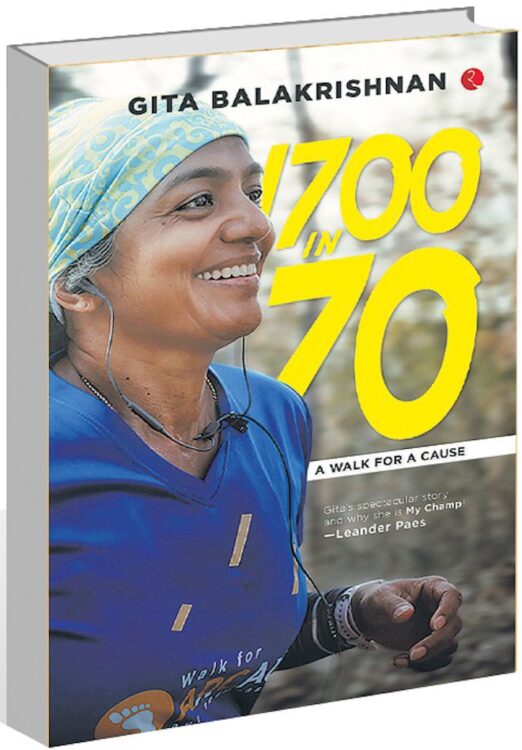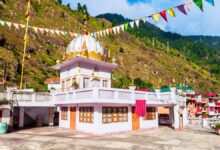Gita Balakrishnan’s “1700 in 70” explores the complexity and journey of the human soul
Before Bill Bryson’s best-selling book, “A Walk in the Woods,” very few people knew that walking alone could be a career; many people still ask themselves “why” and “how.” But, winners and achievers are composed of a distinct substance and grit. Gita Balakrishnan is a member of this group! Readers will come away with her walking memoir, “1700 in 70,” inspired, energised, and a little in awe of the experiences, insights, and interactions she skillfully weaves together.

The author, a 53-year-old architect by trade, sets out to explore “design sensibilities intrinsic to the fabric of Indian society” by trekking across a portion of the country. She examines the transformational power of walking, explaining how each stride taken has impacted her perception of the world around her and of herself per se. Her writing is complemented with exquisite language and deep reflection. Her 1,700-kilometer trip in 70 days from Kolkata to Delhi is detailed in the biography.
She invites readers to accompany her on a compelling journey of endurance and pleasure, socializing and introspecting, shedding light on seemingly simple natural wonders and inexplicable human complexities—aall experienced through walking across six Indian states and touching the capital—tthrough an obtrusive narration, raw honesty, and astute observations.
The story, which is told as a series of journal entries, is interspersed with well chosen and visually appealing “showstoppers”—remarkable locations, notable individuals, and noteworthy organizations. In addition to providing insights into the arbitrary barriers that divide us and the common humanity that unites us, her encounters with everyday people—masons, villagers, activists, daily wagers, women fetching water—offer a poignant commentary on the complex intersections of identity and provision, cultural tidings, and social norms.
At the heart of the story is a wide range of human endeavors, with interactive examples, social forecasts, regional and cultural customs, and a classic example of circumstantial disclosures and adaptations highlighted. Every show-stopper represents a celebration of the human spirit and a call to reclaim our ties with the world and space around us, whether it be the mahua tree, the restoration contractor Chintamani of Newari, the government school in Jhansi, the female mason in Latehar, the mud-dwellings of the Adivasi community of Madhabpur, or the ruins of an old British church at Bishnupur.
The narrative also offers a provocative explanation of the nature of boundaries, both real and imagined, as well as the human need for acceptance and connection. She adds, “I felt one with the many whose paths crossed mine while I walked alone.” The reader is reminded of the transformational potential of pushing oneself beyond one’s comfort zones, even if it means entering “a vast unknown,” by the author’s open comments on loneliness, vulnerability, and tenacity.
While the author’s interactions and observations provide a wealth of insights into the extraordinary ordinariness of the human spirit, some readers may find themselves desiring a more in-depth examination of the “architectural” and “design” elements that are skimmed over and quickly discarded rather than contributing nuance and complexity to the story. A few chapters, such as “Acclimatization” and “Toilet Tales,” are endearing in their own unique ways, and their wit and humor complement the deeper examination of human emotions, senses, and quirks without taking anything away from it: And here I was, having to deal with restrooms and a new bed every day. I was not repulsed or concerned either. For me, this was perhaps the best kind of acclimatization.
She leaves readers with a tremendous feeling of wonder and amazement as she struggles with doubts and problems and finds comfort in the rhythmic cadence of her footsteps, the healing power of nature, and the act itself. The book reads as a narrative that explores ideas of contemporary life without urbanization, offering a thorough analysis of both the state of affairs and potential improvements.







